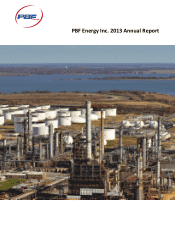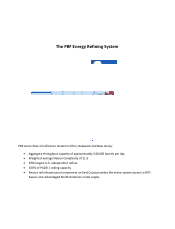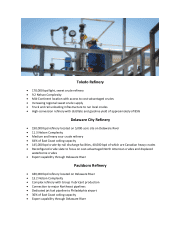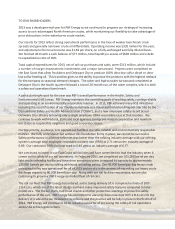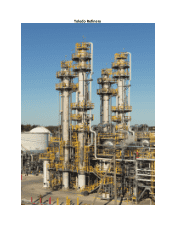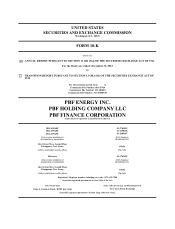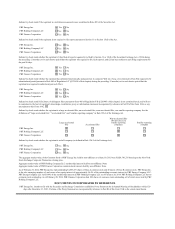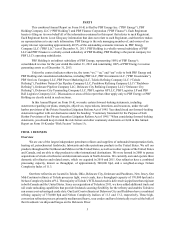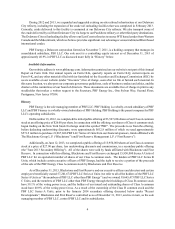PBF Energy 2013 Annual Report Download - page 4
Download and view the complete annual report
Please find page 4 of the 2013 PBF Energy annual report below. You can navigate through the pages in the report by either clicking on the pages listed below, or by using the keyword search tool below to find specific information within the annual report.
TO OUR SHAREHOLDERS
2013 was a developmental year for PBF Energy as we continued to progress our strategy of increasing
access to cost-advantaged North American crudes, while maintaining our flexibility to take advantage of
price dislocations in the waterborne crude market.
Our results for 2013 reflect strong operational performance in the face of weaker benchmark crack
spreads and generally narrower crude oil differentials. Operating income was $320 million for the year,
and adjusted pro forma net income was $1.48 per share, on a fully-exchanged and fully-diluted basis.
We finished 2013 with a cash balance of $77 million, total liquidity in excess of $600 million and a debt
to capitalization ratio of 30%.
Total capital expenditures for 2013, net of rail car purchases and sales, were $31 million, which include
a number of margin-improvement investments and a major turnaround. Projects were completed on
the East Coast that allow Paulsboro and Delaware City to produce 100% ultra-low sulfur diesel or ultra-
low sulfur heating oil. This transition gives us the ability to pursue the products with the highest netback
for the company as seasonal demand changes. The coker and hydrocracker turnaround completed at
Delaware City in the fourth quarter followed a record 26-month run, of the coker complex, which is both
a safety and operational benchmark.
A particular bright spot for the year was PBF’s overall performance in the Health, Safety and
Environmental (HSE) areas. PBF Energy maintains the overriding goals of working safely, running reliably
and operating in an environmentally responsible manner. In 2013, PBF achieved many HSE milestones
including the recertification of our Paulsboro Refinery as a Voluntary Protection Program Star Site by the
Occupational Safety and Health Administration (“OSHA”), and a new employee safety record at our
Delaware City refinery by having only a single employee OSHA-recordable case at that location. We
continue to work with Federal, State and local agencies to improve mutual cooperation and maintain
our status as responsible neighbors and good corporate citizens.
Our top priority, as always, is to operate our facilities in a safe, reliable and environmentally responsible
manner. We fully understand that without this foundation firmly in place, we cannot be successful.
Safety performance in all three refineries was better than the refining industry average with our refining
system's average total employee recordable incident rate (TRIR) at 0.71 versus the industry average of
0.89. Our contractor TRIR also improved to 0.46 versus an industry average of 0.77.
We continued to invest in our East Coast rail facilities and have committed to lead the industry when it
comes to the safety of our rail operations. In February 2013, we completed our 105,000 barrel per day
light crude unloading facility and have since announced plans to expand its capacity to approximately
130,000 barrels per day by adding additional unloading points. Our 40,000 barrel per day heavy crude
unloading facility was operational for all of 2013 and we are in the process of expanding our heavy crude
discharge capacity to 80,000 barrels per day. Along with our rail facilities expansions, we are also
continuing to grow our PBF Energy-controlled fleet of rail cars.
The rail car fleet that PBF Energy has ordered, and is taking delivery of, is comprised entirely of DOT-
111A cars, which are of the latest design and have many improved safety features compared to later-
model cars. The thicker shells, half-head shields and other protective coverings improve the safety
performance of the cars. PBF Energy has committed to use only these new-style DOT-111A cars for the
delivery of crude oil to our Delaware City refinery and this practice will be fully in place in the first half of
2014. PBF Energy will continue to be an industry supporter of increasing the safety of rail operations
across the entire logistics chain.
3

